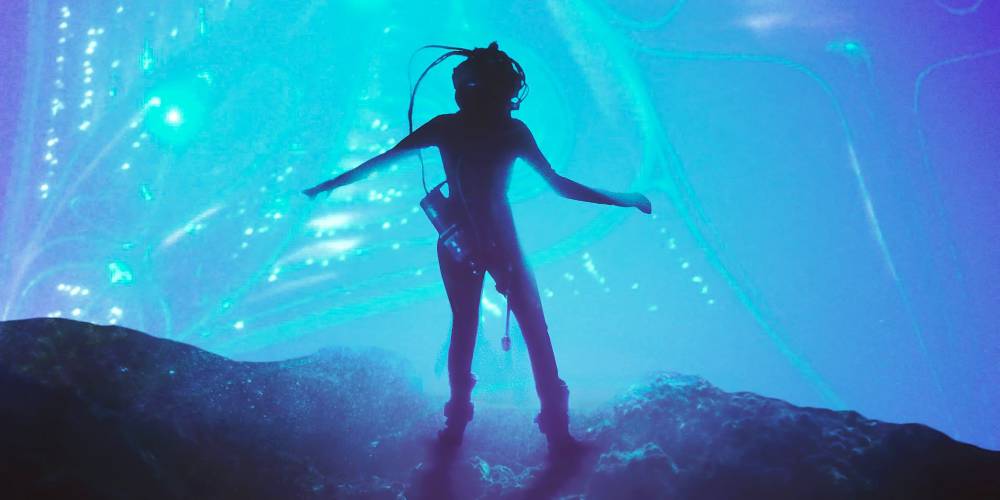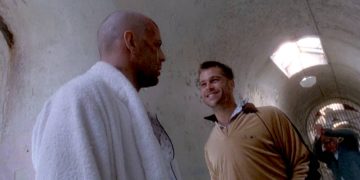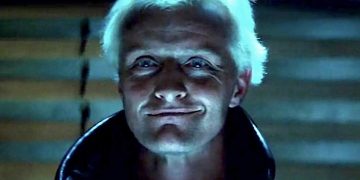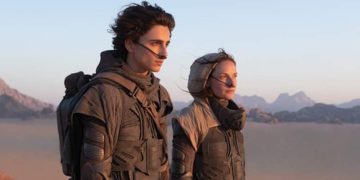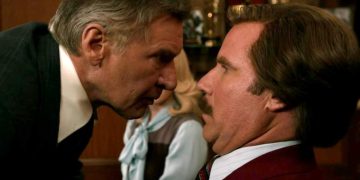With thousands of movies released every year, it's easy to forget just how arduous it can be to make an entire feature film. Just think of all those names that roll up during closing credits!
On average, it takes about 500 people to complete a movie, from pre-production all the way to post-production and release. With so much work involved, there's bound to be a few mishaps.
But some movies experience more than their fair share of production problems. From bad weather to moody actors to severe—and even fatal—injuries, many large film productions have fallen under the curse of perpetual bad luck.
You might've heard some wild stories, like Leonardo DiCaprio (a vegetarian) eating raw bison liver in freezing conditions for The Revenant, or Robert Pattinson eating mud and getting so drunk he wet himself for The Lighthouse.
And then there are those that were truly nightmarish. Here are some of the craziest movie production problems that went on behind-the-scenes while filming major motion pictures.
13. Blade Runner (1982)
Produced during the 1980s New Wave of Sci-Fi, Blade Runner was a hot mess that somehow became a cinematic masterpiece
In it, director Ridley Scott married old-fashioned film noir with a dystopian cityscape for his (very loose) adaptation of Philip K. Dick's Do Androids Dream of Electric Sheep?
The cult classic hit proved difficult from start to finish, with director Ridley Scott and star Harrison Ford clashing constantly. In fact, there were ill feelings all around in every which direction.
Most of the crew hated Ridley Scott. Sean Young hated Harrison Ford. Harrison Ford felt betrayed by the ending. You can almost feel the tension coming off set just by reading about it.
The documentary Dangerous Days: Making Blade Runner shines a light on Scott's gratingly exact directing methods, alongside Ford's brooding and bored presence around set. The film's shoots often ran late, encroaching on union rules that Scott wasn't aware of.
Scott met even more hostility after he told a newspaper that he preferred working with UK crews. In protest, everybody on set wore t-shirts that read: "'Yes Guv'Nor' My Ass!"
On the bright side, the surly and chaotic production atmosphere no doubt added to the dreary tone of Blade Runner.
12. Waterworld (1995)
While Waterworld wasn't a total flop, it certainly wasn't worth the grueling production journey. As you can guess from the title, much of Kevin Reynolds' adventure flick required aquatic set pieces.
Water is NOT a film crew's friend.
Many of the props and sets were built in Hawaii, which ate up a huge chunk of the budget. Back in the 90s, a quick SFX fix-up wasn't really an option, so the entire cast, crew, and extras had to be transported to and from islands in the middle of the sea every day.
A whole host of problems slammed production: One of the sets ended up sinking. Tina Majorino was stung by jellyfish multiple times. Two stunt doubles were badly hurt, one nearly dying of a blocked artery. Kevin Reynolds eventually walked away from the project.
Kevin Costner was left to deal with the bloated budget and injury-ridden production—and he himself almost died caught in a squall.
11. The Man Who Killed Don Quixote (2018)
The fact that The Man Who Killed Don Quixote took 30 years to make says everything you need to know. Directed by Terry Gilliam, The Man Who Killed Don Quixote was inspired by Miguel de Cervantes's epic Spanish novel Don Quixote, published between 1605 and 1615.
Gilliam first picked up the project in 1989, but it took almost 10 years to secure funding. Back then, Johnny Depp and Jean Rochefort were cast to star, but production quickly nosedived into cancellation.
The disastrous production stories—flooding, illnesses, lack of funds, insufficient insurance, noise pollution, etc—were all captured in the 2002 documentary Lost in La Mancha. (Keith Fulton and Louis Pepe began filming behind-the-scenes footage for a bonus making-of film.)
Over the next few decades, Gilliam tried to relaunch production with various actors (including possibilities in Ewan McGregor, Jack O'Connell, and John Hurt) but to no avail.
Gilliam finally managed to release the film in 2018, featuring Adam Driver and Jonathan Pryce, with a follow-up documentary called He Dreams of Giants. After all that, The Man Who Killed Don Quixote only got three stars.
10. American Graffiti (1973)
Four years before directing Star Wars, George Lucas directed the much more down-to-Earth American Graffiti. Yet whereas the epic sci-fi blockbuster could justify a demanding and troublesome production, American Graffiti could only chalk it up to bad luck.
The easygoing coming-of-age movie may seem like it would've been a breeze to make, but it was far from it. Two days in and Lucas had lost his shooting permit from the San Rafael City Council. Once he got it back, the entire production fell behind schedule.
One key production member was arrested for growing marijuana. Actor Paul Le Mat (who chucked Richard Dreyfuss into a poll and cracked his head open) was rushed to a hospital with an allergic reaction to a walnut. Harrison Ford was arrested for a bar fight, and somebody even set fire to Lucas' hotel room.
9. Jaws (1974)
Jaws is famous for many reasons. It was the first-ever blockbuster, it was a technical feat (no CGI sharks back then!), and it made iconic use of camera movement and sound, including the contra zoom and build-up music.
The now-famous theme tune of an approaching shark was entirely made by accident—a blessing in disguise. Director Steven Spielberg originally wanted to show the shark visually, but he couldn't overcome technical limitations, so he used music instead.
Production took place in spring, with extras standing around, trying to conceal their shivers, pretending it to be a hot summer day, waiting for the crew to fetch the animatronic shark from the bottom of the sea.
The props department made several different great white sharks to shoot with, but none of them proved particularly waterproof or rustproof. The result? Spielberg resorted to suggesting the shark's presence through music, camera angles, and acting. Thus, a classic was born.
On top of this, Jaws actually started filming without a finished script. Other than the source material of Peter Benchley's 1974 book, Spielberg practically winged it with nothing but a faulty shark and arguing lead actors (Robert Shaw and Richard Dreyfuss).
8. The Shining (1980)
Stanely Kubrick is notoriously known for his (very long) visionary masterpieces, which meant very meticulous and very taxing demands on everyone on set.
He even made it into the Guinness Book of World Records. For what, you ask? Well, remember that scene where Jack Nicholson walks up the staircase with a baseball bat? That was the 127th take.
And that wasn't a one-off incident. Kubrick ordered at least 35 takes for every single shot and forced Jack Nicholson to clean his teeth (yes, you read that right) before every single one.
Co-star Shelley Duvall was sick for months after filming wrapped, due to the pressure of acting under Kubrick's demands. In later interviews, she's often cited the experience as a traumatizing one. Being made to cry for hours without rest, every single day, is an exhausting task.
The Shining was supposed to take six months; it actually took a whole year. How's that for psychological horror?
7. Heaven's Gate (1980)
Heaven's Gate lost complete financial control when director Michael Cimino insisted on building and tearing down entire sets.
Historical accuracy was key, so props were endlessly tweaked and reconstructed no matter the cost—which funding body United Artists wasn't happy about.
Furthermore, over a million feet of footage was shot in total. Cimino was so fussy that they had to wait for a certain type of cloud to appear before taking—and retaking—and retaking—certain shots.
Cimino seemingly got a little power crazy following the acclaim of The Deer Hunter and fired people and destroyed sets for no obvious reason. The director's cut was originally 5.5 hours long, then ultimately trimmed back to a (still hefty) 3 hours.
Unfortunately for Cimino, Heaven's Gate bombed at the box office and his career never recovered.
6. The Abyss (1989)
Almost half of The Abyss's production took place underwater, where nobody could move, breathe, or operate cameras.
Not ideal for a movie. In fact, most of James Cameron's projects have been far from ideal to make. It seems he's always setting out to push limits, break barriers, and even create new technologies in the process.
The thing is, not only does water not mix well with technology, it's extremely uncontrollable.
Cameron had to ditch his plan to film in the Bahamas and instead submerge his crew in a slightly more manageable 150,000-gallon water tank. However, on day one, the tank had already broke a leak.
So, with the tank idea a bust, Cameron spent five days filling up an abandoned power plant with 7.5 million gallons of water.
The cast were given intense diving lessons before filming, and actress Mary Elizabeth Mastrantonio suffered a nervous breakdown after working 12 hours a day, 40 feet under.
5. The Passion of the Christ (2004)
This film's production wasn't so much torturous as it was bizarre. For a movie about a man who performed miracles, it's beyond ironic that so many actual "miracles" took place on set.
Lighting strikes about 240,000 people per year; The Passion of The Christ saw three of them:
- Jim Caviezel, who plays Jesus in Mel Gibson's epic, was struck by lightning while filming The Sermon on the Mount and set on fire.
- An assistant came over to check that he was alright—and he was subsequently struck by lightning.
- Jim Caviezel was struck by lightning again while being crucified, which is surreal given the nature of the scene.
That wasn't all for Caviezel:
- He was accidentally whipped—twice.
- He also dislocated his shoulder, which you can see in the scene where he drops a 150-pound wooden cross on himself.
- He contracted hypothermia and pneumonia.
- He got severe migraines from the prosthetics that took 10 hours to put on.
- In one scene, his skin can be seen turning blue from asphyxiation.
The controversial movie's production managed to convert multiple crew members to Catholicism due to their profound experiences on set. One of these, ironically, was Luca Lionello—an "angry atheist" who played Judas in the film.
4. Titanic (1997)
You can tell from the sheer scope and magnitude of Titanic that it was a laborious task—especially since it was made in the 90s. Director James Cameron didn't anticipate just how tough it'd be, although he should've known, given the experience he had while making Abyss.
After all, both Titanic and Abyss feature a grandiose plot and lots of water. Lots and LOTS of water. And as we've already leant from this list, that's never a good sign for film production.
Many cast and crew members caught the flu after being submerged in freezing water for so long—water that Cameron himself flooded the sets with. When Kate Winslet lets out a gasp as she enters the water in the movie? That gasp is real. The water was actually freezing.
Separately, 50 crew members ended up going to the hospital when the production's catering company served bowls of chowder—that were spiked with PCP, a hallucinatory drug.
And even as production went 138 days past schedule and over budget, Cameron clashed with studio heads to get the movie made.
Titanic was the most expensive movie ever made at the time. Fortunately, it was also the highest grossing box office winner of the time, too. To this day, it's still the third highest grossing movie ever.
3. Fitzcarraldo (1982)
Werner Herzog's epic period piece was notoriously infernal to make. We aren't just talking about damaged props or rain. People died.
Not only did Herzog controversially use indigenous tribespeople as extras, but a handful of them died because filming conditions were so bad. One man was shot in the throat with an arrow. A woman required surgergy for internal bleeding. A logger had to amputate his own foot with a chainsaw because of a deadly snake bite.
With actors leaving the project left and right, Herzog resorted to casting Klaus Kinski. Kinski annoyed Herzog so much that he reportedly pointed a gun to his head.
That's still not the end of it. Herzog refused to use a model for the 320-ton steamship, so two real boats were bought and pushed around. Oh, and there was a plane crash. Wait... make that two.
2. The Wizard of Oz (1939)
It's now common knowledge that this colorful classic family movie was made from the stuff of nightmares.
If you've seen Rupert Goold's Oscar-winning biopic Judy, you'll know how traumatizing Judy Garland's life was under the rainbow. At just 16-years-old, Garland was made to diet and take pills to stay slim. She became addicted to these, which led to her suspected suicide.
Garland was reportedly slapped in the face when not performing to perfection. A bunch of other dark rumors have circulated about Garland's experiences while making The Wizard of Oz, but these haven't been confirmed.
For everyone else, there was little time for the cast to sleep between shoots, working brutal 16-hour days (during which Bert Lahr wasn't allowed to eat because of his costume).
As cinema technology hadn't advanced much, the technical aspects in making The Wizard of Oz were long and exhausting. The costumes were torture to wear, with the lion suit being made of real lion hair (ew) and Jack Haley being taken to the hospital after a makeup disaster.
Margaret Hamilton caught fire as The Wicked Witch of The West, and her toxic copper face paint burned her skin. Ray Bolger's scarecrow prosthetics left year-long scars on his face. The artificial snow was made of asbestos (before people knew it was carcinogenic).
The only good news is that the oft-circulated rumor about a munchkin hanging itself in the background of the set pieces is untrue. Still, with everything else that went on, good luck trying to enjoy The Wizard of Oz the next time you watch it.
1. Apocalypse Now (1979)
Apocalypse Now's production was strained, to say the least. Director Francis Ford Coppola shot nearly 200 hours of footage over 16 months, and it took about three years just to edit it together.
The movie's complicated and burdensome storyline was reflected in the strenuous filming process, which Coppola had to mortgage his own house to fund. (Luckily, the war epic was a box office success, otherwise he would have been bankrupt.)
The 1991 documentary Hearts of Darkness: A Filmmaker's Apocalypse recounts the film's unorthodox production history, throughout which it was repeatedly signed off and on by producers.
Marlon Brando tested the director and co-star Dennis Hopper by forgetting all of his lines and rarely appearing to set. And when he did, he was so significantly heavier that the wardrobe department was forced to revamp all his costumes.
Hopper condemned the notoriously diva-like actor for not reading the book on which Apocalypse Now was based, leading to a lot of screaming and yelling on Brando's part.
That opening scene where Martin Sheen is rolling around his hotel room in a drunken haze? He's actually drunk. Sheen told the crew to keep rolling as he improvised the whole thing while smashed.
Sheen eventually injured his hand after punching a mirror, and had a near-fatal heart attack from all his drinking. Post-breakdown—which nearly shut the movie down—and back from the hospital, Sheen evidently looked "too healthy" for his character as a famished soldier.
Coppola filmed most of the movie in the Philippines, where bad weather destroyed many of the sets. The army refused to lend the crew military equipment, which Coppola—not wanting to use models—had to borrow elsewhere.
And with everything going wrong, Coppola threatened to kill himself on multiple occasions. Fortunately, he didn't go through with it. Instead, the completed Apocalypse Now won a Palme d'Or and two Oscars.
